By Rick VanSickle
For Niagara-based winemaker Thomas Bachelder, good things come in threes — especially when it comes to wine.
The wine business he owns with his wife Mary Delaney is built on the three terroirs of Niagara, Burgundy and Oregon. And their Niagara portion of that trilogy, with the introduction of a Niagara-on-the-Lake sourced Chardonnay, features three key terroirs in Niagara — Twenty Mile Bench, Beamsville Bench and the latest Chardonnay sourced the Willms Vineyard in Four Mile Creek. It’s a bold move for winemaker Bachelder, who has always favoured the dirt and climate of the cooler, more limestone rich soils on the benchlands of Vineland and Beamsville for Chardonnay, but Willms Vineyard, formerly called Sandstone, is something he’s had his eye for a while.
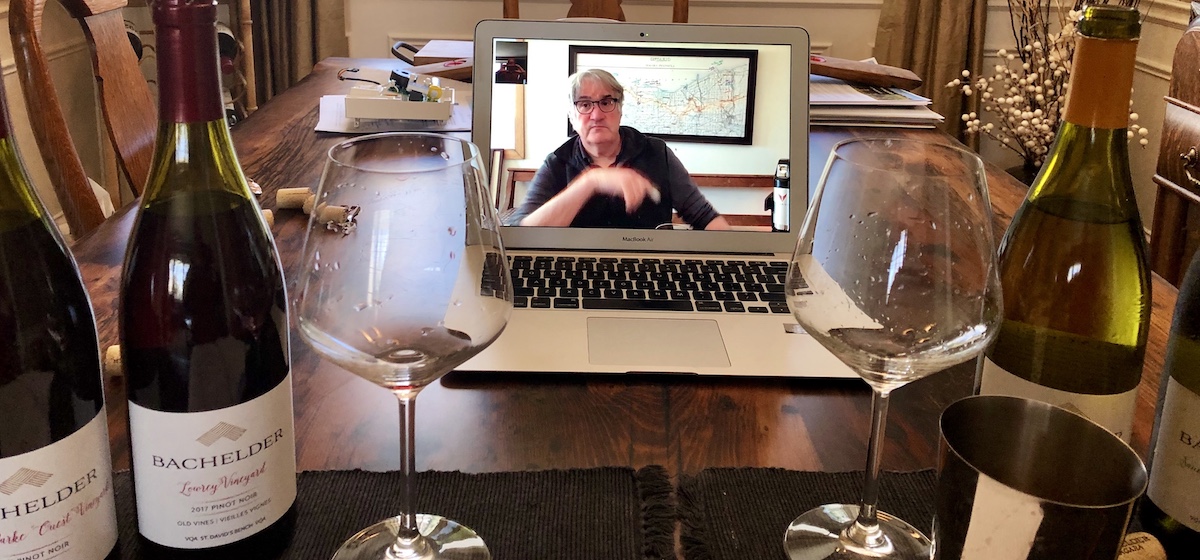
There is no questioning Bachelder’s keen eye for finding top vineyard sites to feed his growing portfolio of Chardonnays, Pinot Noirs and Gamays, and Willms, planted in 1983, fits his style perfectly as a poster girl for the sub-appellation. It’s the first time he’s strayed from a fairly rigid winemaking regime for his Chards, but felt the riper fruit of Niagara-on-the-Lake would need some minor adjustments fit into his portfolio of terroir-driven, finessed, minerally and focused wines.
He fermented half the grapes in puncheons instead of barrique to keep the oak in check and better accentuate what he calls the “pleasant salanity” of Willms.
“Making these wines was a thrill for me, and was my way of learning about how these classic far-flung terroirs differ,” he says.
The three single-vineyard 2017 Chardonnays are all four-barrel lots (roughly 1,150 bottles each after lees loss), and there is no new oak in any of the wines (the barrels are 1-year-old, 2-year-old and the last two are 4-year-old barrels in all lots).
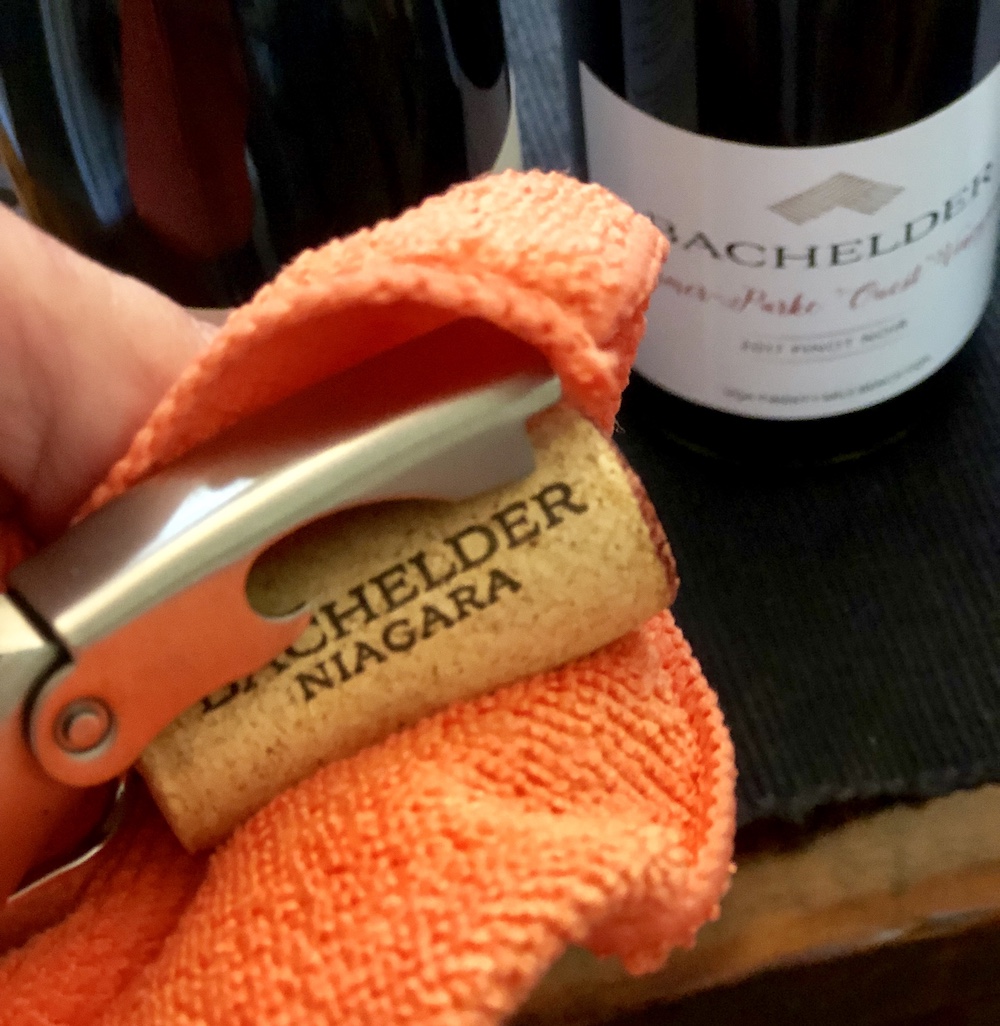
Bachelder’s “La Violette” spring release, only the second release since the Bachelder project was granted a retail licence last year, went on sale this week online here (free shipping with minimum three-bottle limit). Also new in the release is a deep dive into the world of Bachelder Gamay Noir, with four different bottlings (who else is making four Gamays in their portfolio?) released from the 2018 vintage, three of them single-vineyard wines and the fourth a “village” style.
I tasted most of the release “with” Bachelder, my first formal tasting with a winemaker since the COVID-19 pandemic broke. Tasting in person was out of the question, of course, so we set up a time for the wines to be dropped off (thank you, Mary!), picked a day and time and arranged to go through the wines via FaceTime. It was fascinating. I washed and sanitized my hands (just in case I shared the bottles) and opened the wines prior to the tasting, lightly chilling the Chardonnays. Bachelder chose the order, which, by the way, made perfect sense how he placed them.
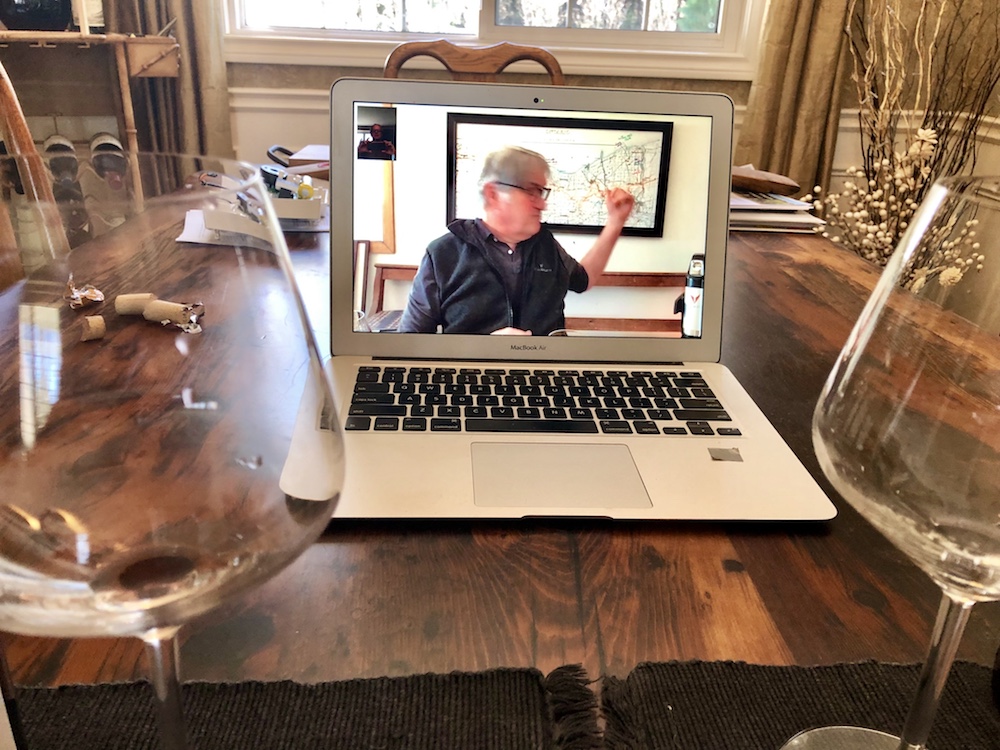
Bachelder was in his “Bat Cave” on the Beamsville Bench on his i-Pad, I was in St. Catharines at my dining room table with my laptop. Maisy (our pooch) was asleep on the couch (bad dog!).The picture was crisp and defined on both ends and the sound crystal clear for taking notes. He even used a map behind him to make some of his points.
I have no idea why it took a pandemic to figure out there are other ways to get this job done, but you have to feel for winemakers and wineries who are relying entirely on online orders to keep the lights on during this difficult time. No tastings, no retail shopping, no tours, no gifts no events. For Bachelder and Delaney, who only entered the world of retail last fall with their first online release, the coronavirus has meant getting creative with social media (check out some great videos on Instagram here to get the word out. “We were just getting know people, then it all gets shut down because of the virus,” Bachelder says. “I want to get people back in the bat cave.” He’s referring to the new tasting room that he calls his bat cave that opened up last fall, by appointment only. It was (and will be again) a comfortable space to taste new wines and explore old favourites face-to-face with Bachelder.
Here’s what we tasted from the release now available online:
The Gamays
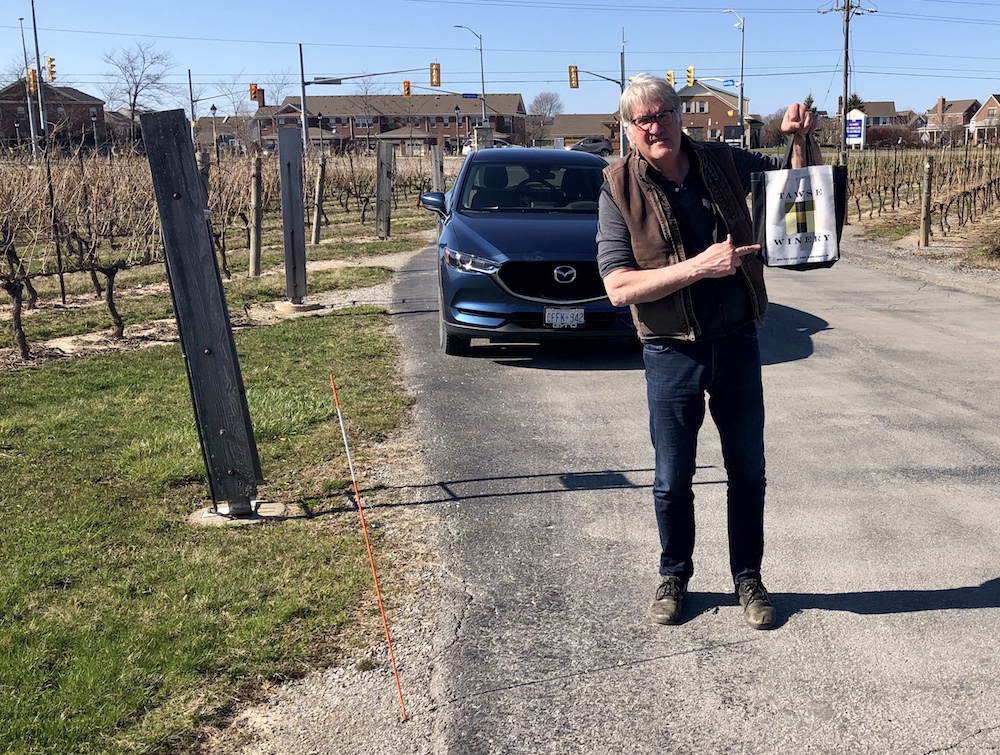
Bachelder labours over tasting order, but settled on Gamays first, Pinots second and Chardonnays last. Of the Gamays, we started with the “Les Villages” and then headed into three single-vineyard Gamays (in real life, I had to taste the three single-vineyard Gamays later after a hand-off, at a safe distance, of course, at Jackson-Triggs where Bachelder was checking in on the Le Clos wines he makes there, see photo above). The 2018 Gamays, he says, are “so young and stuffed with fruit that they tend to overwhelm the perfumed, taut 2017 Pinots if they are tasted immediately after. The Chardonnays, however, still look very much like themselves after the Gamays.”
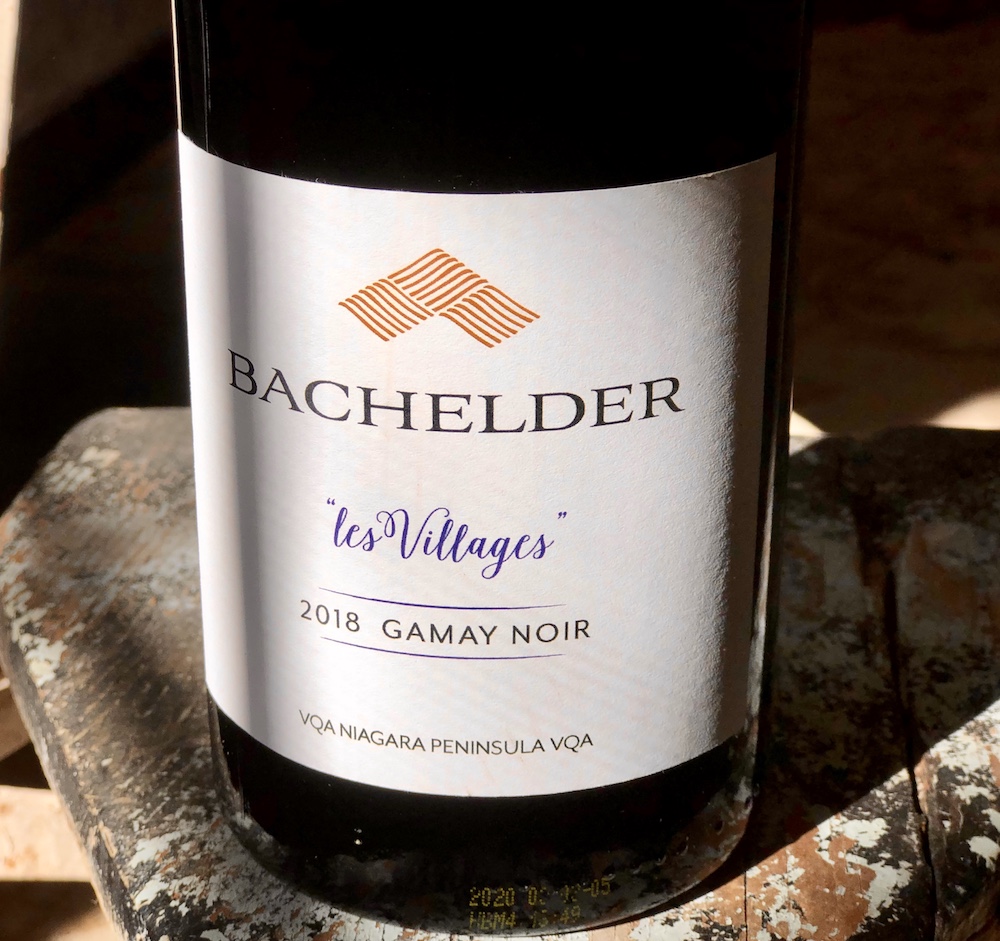
Bachelder ‘Les Villages’ Gamay Noir 2018 ($23, 89 points) — Les Villages is a blend of older Gamay vineyards from the limestone-laced vineyards of Niagara. It has a lighter colour in the glass, more a trait of the vintage than his style, with a nose of pristine red berries, elegantly scented red plums, mineral intensity, subtle meaty/savoury notes and spice (the wine spends 14 months in French oak, all neutral barrels). It’s rich and stony with surprising structure on the palate that reveals raspberries, cherries, red currants, earth and spice in a rich style that is all together quaffable while also cellarable for a couple of years.
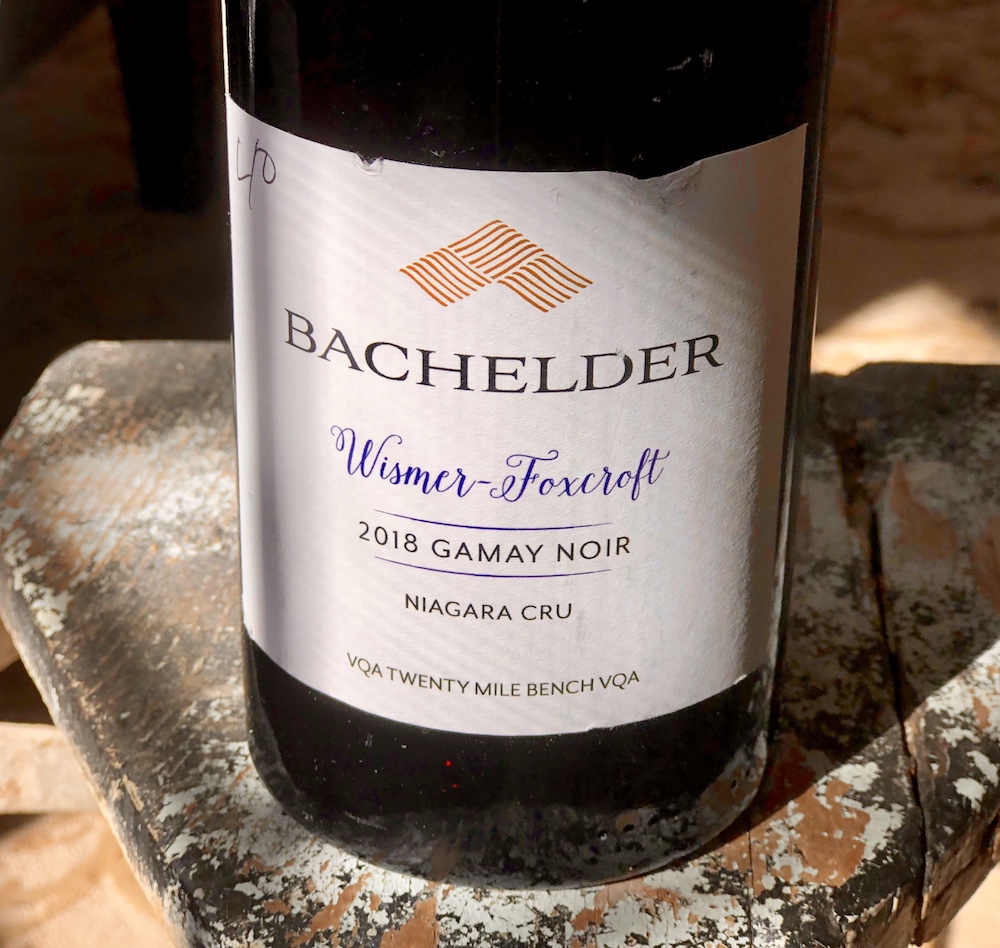
Bachelder Wismer-Foxcroft Vineyard Gamay Noir Niagara Cru ($28, 90 points) — The Wismer-Foxcroft Vineyard Gamay comes from the lower northern slope below the Chardonnay planting from vines 20+ years old. The nose shows overt plummy, earthy red berries and savoury spice notes. Such flavours on the palate with ripe red berries, bramble, cherry pie, savoury herbs and spice on a vibrant, electric finish.
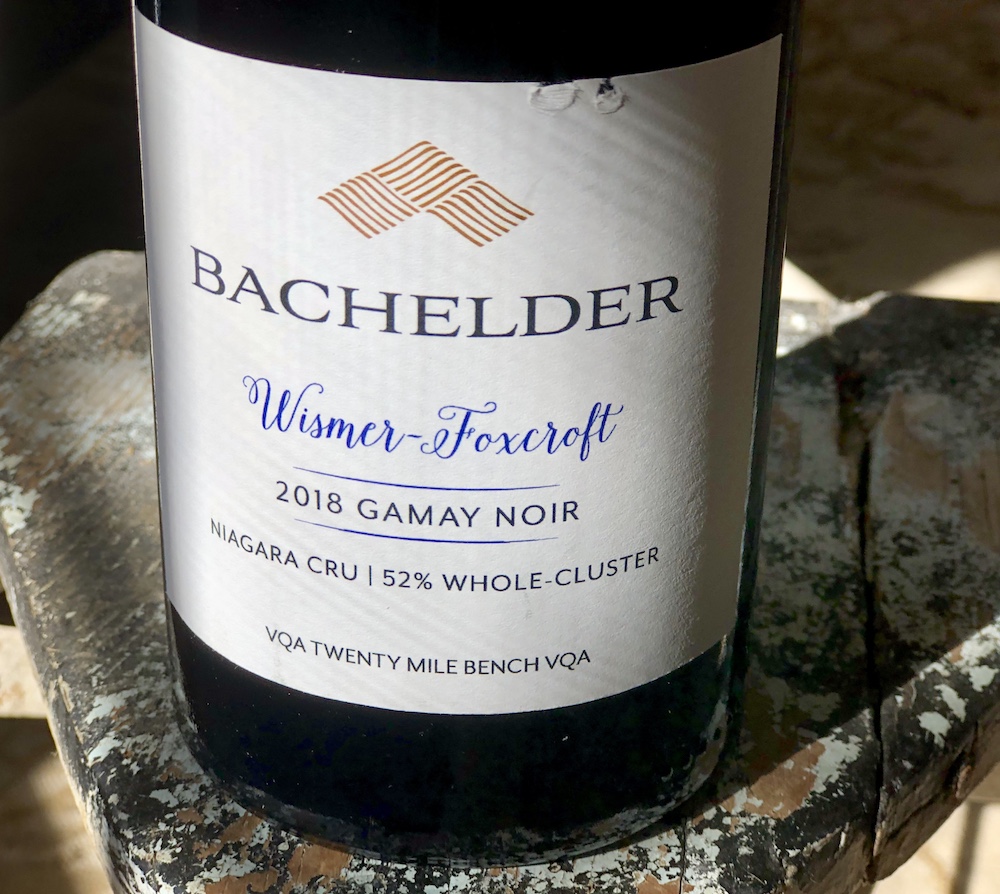
Bachelder Wismer Foxcroft Gamay Noir Niagara Cru 52% Whole Cluster 2018 ($27, 91 points) — A small-lot, wild ferment Gamay with a high proportion (52%) of whole cluster pressing from the same vineyard as above with only the only difference being the ferments. Shows a tighter nose with red berries, cassis, more perfume and integrated spice notes emerging with vigorous swirling. It explodes on the palate with rich, ripe crushed red berries, underlying spice notes, savoury herbs and spice with a long, juicy finish. Could cellar up to 3 years.
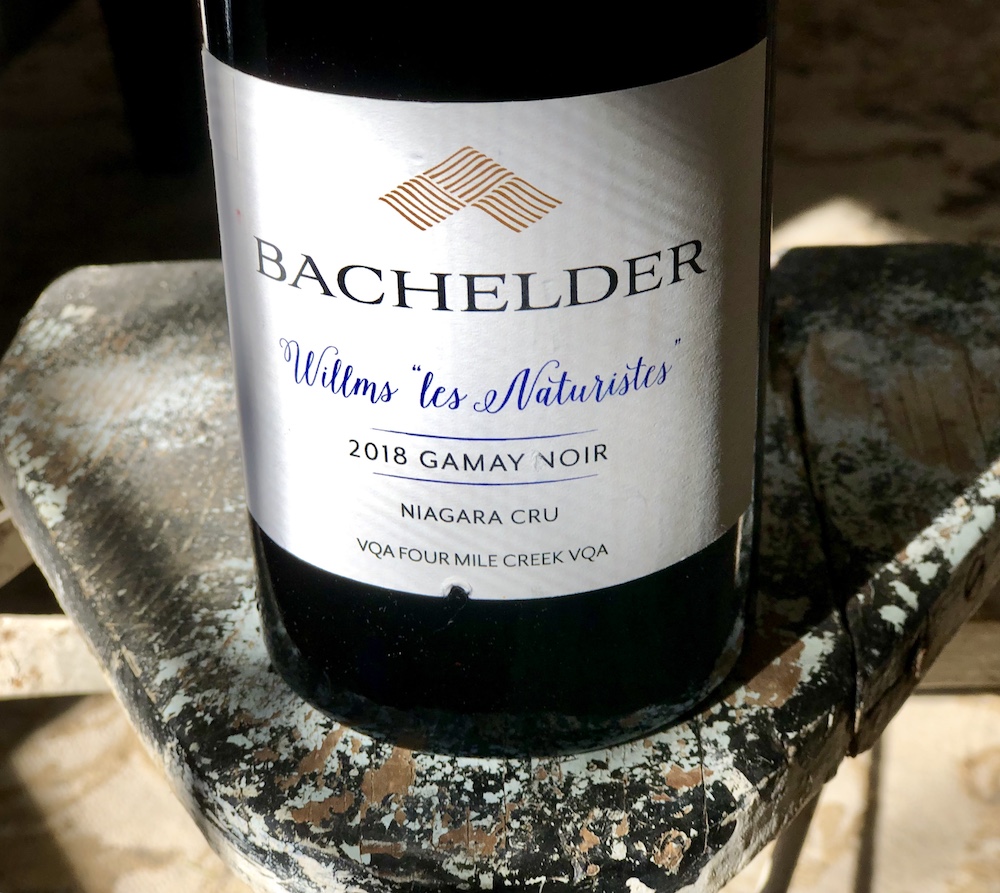
Bachelder Willms ‘Les Naturistes’ Gamay Noir Niagara Crus 2018 ($27, 92 points) — The lightest colour of three, ‘Les Naturistes’ is “a wine with no make-up and made with 55% whole clusters and aged in neutral barrels for 16 months. This is the first red wine from Willms in Niagara-on-the-Lake, sourced from old vines planted in 1983. It has the lightest colour of the four Gamays and is the most different from the four. The nose shows brambly raspberries, plums, earth, some reductive and integrated spice notes. It’s highly quaffable with pure and focused red berries, earth, savoury herbs and spice. A stripped down Gamay that stands out in a crowd. Ready to drink right now.
The Chardonnays
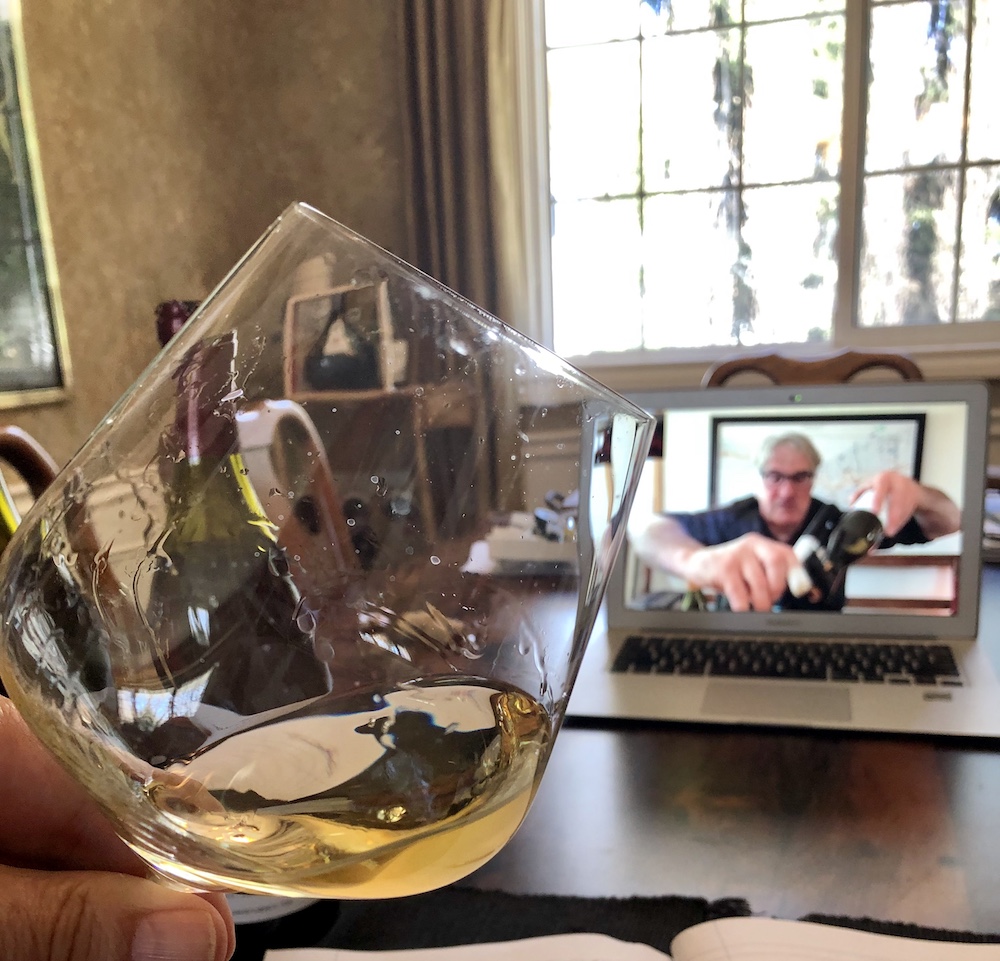
The order of these wines, meticulously thought out by Bachelder, is curious on first blush, but the winemaker has some solid reasons behind it. You might be tempted to start with the leanest of the three and work up to the more fleshy new wine in the three-terroir series. Bachelder has different thoughts: “If you taste Willms (Four Mile Creek, Niagara-on-the-Lake) first (lovingly selected from the eastern, more lean side of the vineyard) you will likely see the lovely broad, saline aspect of the Four Mile Creek terroir! Meursault-like weight?” He wants you to taste the mineral edge before venturing to the more mineral-laden Bench terroirs. He suggests the Saunders Haut Vineyard (Beamsville) “after the Willms, for although Beamsville is quite close to the lake, it will show ‘Bench minerality’ by contrast.” The Wismer Wingfield Ouest (Twenty Mile Bench) is furthest from the lake, harvested last, and, typically, the most searingly mineral,” Bachelder says. “By the way, if you happen to go back to the Willms after tasting this, it will suddenly really taste like Niagara-on-the-Lake!”
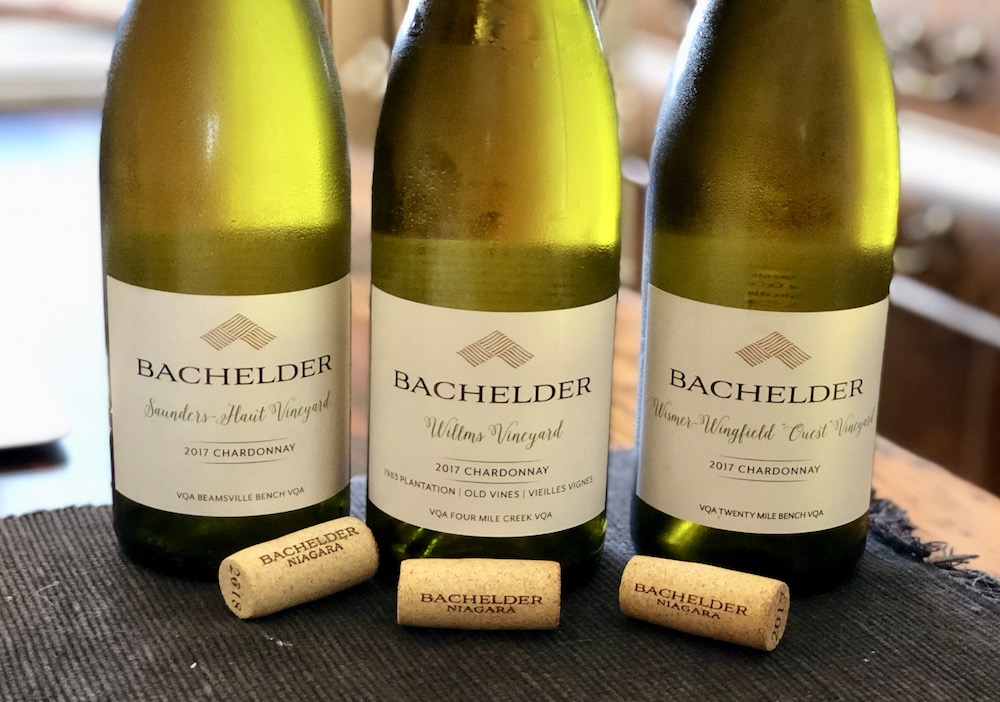
Bachelder Willms Vineyard Old Vines Chardonnay 2017 ($45, 92 points) — The newest member of the Chardonnay family from a winery in the Four Mile Creek sub-appellation in Niagara-on-the-Lake that Bachelder has had his eye on for quite a while. It completes a trilogy of now having Chards from the Twenty Mile Bench, Beamsville Bench and NOTL. Willms was formerly called the Sandstone Vineyard (think 13th Street) and was planted in 1983. Bachelder makes his Chardonnays essentially the same as he has for years. So, wild yeasts, mostly older French oak barrels for long aging ‘élévage’ with the intent for the wines not to taste of oak, but rather, pure, “unfettered wines that sing lightly and clearly of their vineyard origins with as little makeup as possible — wines that are finely perfumed and tightly-wound, offering the classic refined fruit and textured minerality of the best terroirs,” says Bachelder. The first Willms Chardonnay differs only in that half the production was aged in puncheon rather than the smaller barriques. “With Willms, new oak is too much, (you need the) pleasant salinity,” he says. It’s rich and ripe on the nose with pear and apple notes, subtle citrus accents, and elegant spice. It’s more opulent and open-knit compared to the other Chards, but typically maintains that Niagara freshness and salinity. It has elegance on the palate with juicy orchard fruits, velvety/luxurious texture and minerality, a touch of nutmeg spice with finesse and verve on a long finish. Fantastic study in three-terroir Niagara Chardonnays.
Bachelder Saunders-Haut Chardonnay 2017 ($45, 93 points) — Saunders is the Beamsville Bench entry into the trilogy and the second closest vineyard to the lake in the collection, selected from the highest point of the organic vineyard consisting of clay, silt, sand and limestone. “Saunders repels oak in a way the Willms does not,” says Bachelder, adding, “this is the best Sauders I’ve ever made.” It’s much more subtle on the nose than Willms, more refined with elegant saline freshness, pear, apple skin, lemon-citrus, flinty minerality and just a touch of oak spice in the background. Incredibly poised and polished on the palate with lovely quince, fresh honey, integrated oak spices, citrus accents and punctuated by the stony minerality of the sub-app. It’s a complex, refined and finessed Chardonnay that comes at you in layers and finishes with an enthralling, echoing finish. Will age beautifully for 4+ years.
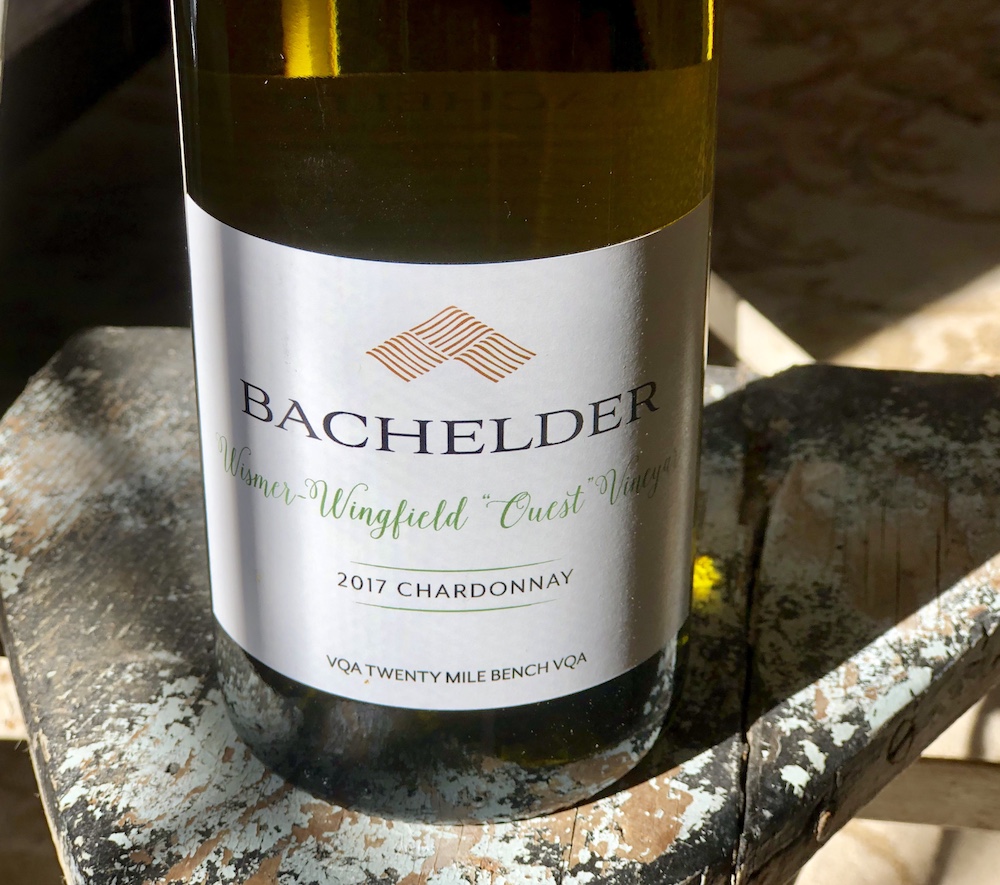
Bachelder Wismer-Wingfield Ouest Chardonnay 2017 ($48, 95+ points) — The Twenty Mile Bench Wismer-Wingfield Chardonnay is from Bachelder’s latest ripening vineyard parcel, furthest from Lake Ontario, at the highest elevation, from the western part of the block. “I know what to do with this wine. Just get out of the way of it,” Bachelder says. “You can practically taste the crunchy rocks between your teeth,” he says, adding: “Old world, that’s what it tastes like to me.” No other wine in the Bachelder portfolio defines his style more than this Chardonnay. If this is not the most interesting Chardonnay made in every vintage in all of Ontario, it is certainly close. When Niagara finally decides to create a “cru” system of defining the best sites for certain varieties, Wismer-Wingfield, now sourced by some of the finest Chardonnay vintners in the region, will get an automatic pass to the elite list. No question about it. This is all about elegance, finesse and defining the undefinable — minerality, and is consistent vintage to vintage because Bachelder makes the necessary tweaks to be true to the vineyard’s potential. It is one of those Chardonnays that you can pick out of a lineup of 100 Chardonnays from anywhere in the world, it’s that singular in style and that particular to Niagara and the Twenty Mile Bench. The nose is dreamy with white flowers, pear, stony/flinty minerality, lemon sharpness, bin apple and underlying elegant spice notes that all build in intensity as you swirl it in the glass. And then as you move to the palate, oh, my, such a clean and fresh entry that builds and builds in complexity with pear, apple and lemony vibrancy, adding crushed rocks, flint, spice and nougat that all leads to an enthralling and elegant finish that lasts for minutes. This will gain some fat and depth as it ages gracefully for 5+ years but is irresistible right now. Can’t see this lasting in the online retail store.
The Pinot Noirs
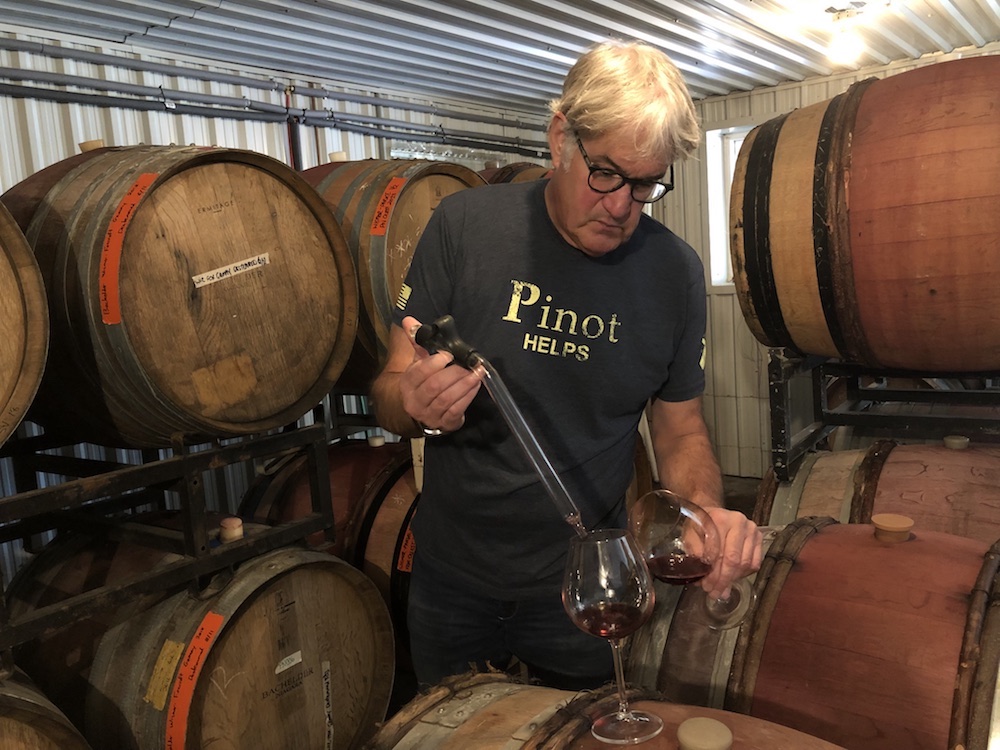
The Wismer-Parke “Ouest” Pinot is grown on magnesium-rich soil. “It has quite a foursquare, ferrous and bloody aspect to it (this, from what is essentially still a delicate wine from a classic cool vintage),” says Bachelder. “We use the western half of the vineyard, with the “reddest” flavour – the other side goes into our “les Villages.”
Of his beloved Lowrey Vineyard in St. David’s, he says: “It is lighter in colour and in some ways more delicate than the Wismer-Parke. I find (tasting) it last makes the elegance obvious, with the added benefit of making the old vine-y limestone finish ‘pop!’ Then, return to Wismer-Parke and you’ll likely see the foursquare/bloody /iodine aspect even more.”
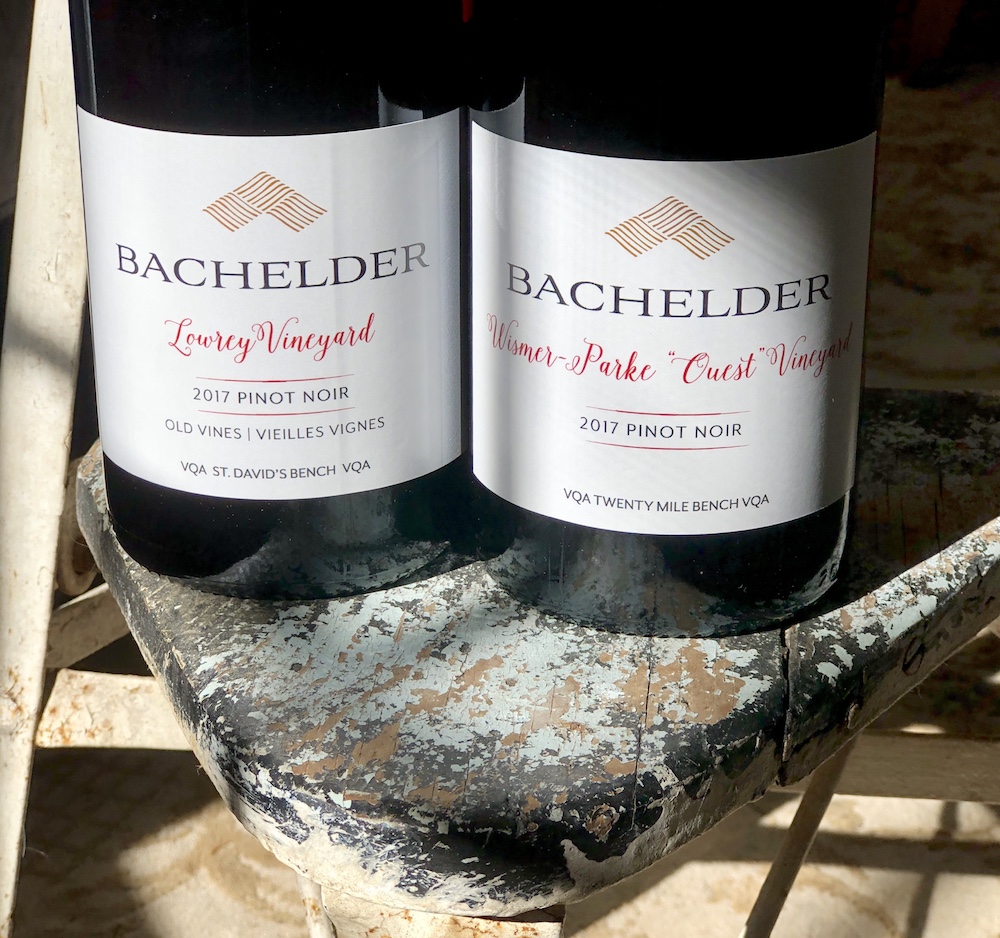
Bachelder Wismer-Parke ‘Ouest’ Pinot Noir 2017 ($45, 92 points) — This Pinot from the “sweet spot” of the Twenty Mile Bench on reddish soils, Wismer-Parke has such a unique nose of dark cherries, forest berries, perfumed bloody/iodine minerality, cloves, touch of damp earth, reduction and savoury spice notes. It is velvety smooth on the palate with savoury red berries, iron minerality, earth, and integrated spice notes all leading to a finessed and vibrant finish. Can cellar for further integration of acidity and tannins.
Bachelder Lowrey Old Vines Pinot Noir 2017 ($48, 94 points) — Bachelder calls it “an honour to work with this vineyard from the 1984 and 1988 vines planted for Karl Kaiser of Inniskillin by the Lowrey family.” He gets more of the coveted original plantings than anyone else in Ontario (two and half barrels, of which he vinifies two barrels separately in case, like last vintage for the first time, he wants to make a bottling from only the oldest vines). He elected to make this vintage a blend of the two plantings he gets from Lowrey. He calls it “fine, fresh, mineral; so complex: A ballerina with great core strength!” On the nose, it is more compact than the previous vintage and tighter with a complex array of pretty red berries, anise and highly perfumed, with minerals and lovely integrated spice notes. It’s so silky smooth on the palate with fine grained tannins, dark cherries, crunchy, brambly raspberries, layered minerality, meaty dense fruit that’s finessed and focused on a firm structure and vibrant finish that reveals opulent oak spice notes. This is a prime candidate for the cellar as it opens up and integrates further. Cellar 5-7 years.





OK, your articles are always fabulous, but now you’re starting to mow MY grass! Your bottle shots are wonderful!
You’re making me blush all over social media!